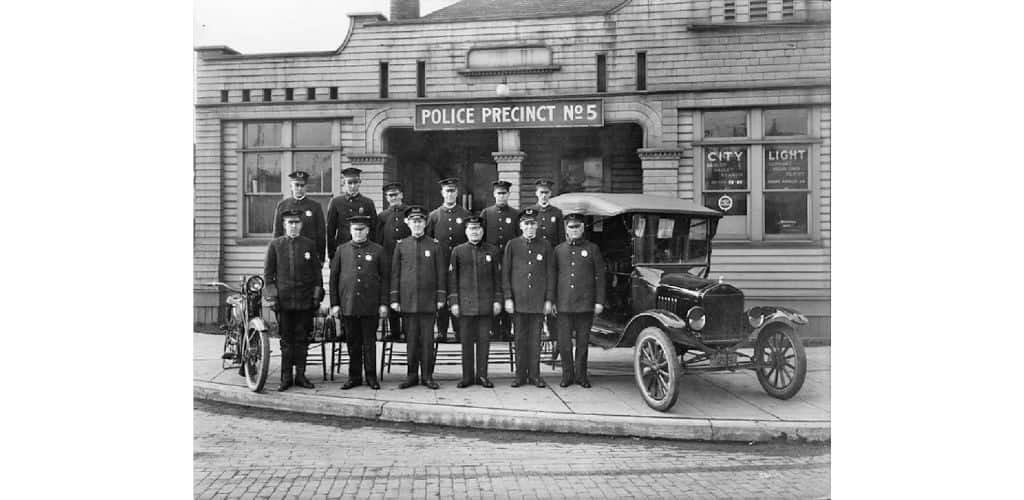The Federal Circuit has affirmed a lower court’s decision that the claims of a patent for software that manages pre-employment background checks weren’t patent-eligible.
The case is In Miller Mendel, Inc. v. City of Anna, Texas.
Miller Mendel, Inc. sued the City of Anna, Texas for infringement of certain patent claims relating to a software system for managing pre-employment background investigations.
Miller Mendel alleged that the City police department’s use of the rival Guardian Alliance Technologies (“GAT”) software platform infringed at least three claims of Miller Mendel’s patent.
Claim 1, for example, includes things like “generating a suggested reference list of one or more law enforcement agencies based on an applicant residential address.”
The district court found that the asserted claims do not claim patent-eligible subject matter under 35 U.S.C. § 101.
The Federal Circuit noted that its first step based on the 2014 US Supreme Court decision in Alice Corp. v. CLS Bank Int’l is to “determine whether the claims at issue are directed to one of those patent-ineligible concepts,” such as an abstract idea. It found that the asserted claims of the ’188 patent are directed to the abstract idea of performing a background check.
As the court discussed,
To determine whether a claim is “directed to” a patent ineligible concept, “we look to whether the claims ‘focus on a specific means or method that improves the relevant technology or are instead directed to a result or effect that itself is the abstract idea and merely invoke generic processes and machinery.’” … For software-based inventions, Alice/Mayo step one “often turns on whether the claims focus on the specific asserted improvement in computer capabilities or, instead, on a process that qualifies as an abstract idea for which computers are invoked merely as a tool.”
The court noted that
Representative claim 1 recites a “method for a computing device with a processor and a system memory to assist an investigator in conducting a background investigation of an applicant for a position within a first organization.”
(Emphasis added by court.)
Also, said the court,
The claim … recites several steps that the computer system performs to assist the investigator with conducting a background investigation. … These steps demonstrate that the claims are directed to receiving, storing, transmitting, determining, selecting, and generating information, which place them in the “familiar class of claims directed to a patent-ineligible concept.”
Indeed, said the court,
The patent specification confirms that the asserted claims are directed to an abstract idea. The ’188 patent states that the problem addressed by the invention is “to help a background investigator more efficiently and effectively conduct a background investigation.”
In short, the court said,
the problem facing the inventor was the abstract idea of performing background investigations more efficiently and effectively, not an improvement to computer technology.
Miller Mendel argued that the method of claim 1 can’t be directed to an abstract idea because certain limitations, such as transmitting hyperlinks via email and generating suggested reference lists, can’t be done in the mind or by pen and paper.
However, the court wasn’t persuaded that claim 1 can’t be directed to an abstract idea even if certain steps can’t be completed in the mind or by pen and paper: “[T]he inability for the human mind to perform each claim step does not alone confer patentability.”
Also,
requiring the use of a computer alone does not change the focus of a claim directed towards an abstract idea into one directed towards “a specific improvement to computer functionality.”
At Alice/Mayo step two, the court found the asserted claims didn’t contain additional elements that “transform the nature of the claim into a patent-eligible application.”
Rather, the patent claims “merely recite well-understood, routine, conventional activities, either by requiring conventional computer activities or routine data-gathering steps.”
The court noted that
the specification itself describes the invention as “automat[ing] the majority of the tasks of a common pre-employment background investigation,” thereby acknowledging that such tasks were routine prior to the date of the invention.
This is yet another example of a failed attempt to defend a patent for automating a well-established process using standard commercial computer equipment.
Just like the haiku above, we like to keep our posts short and sweet. Hopefully, you found this bite-sized information helpful. If you would like more information, please do not hesitate to contact us here.


